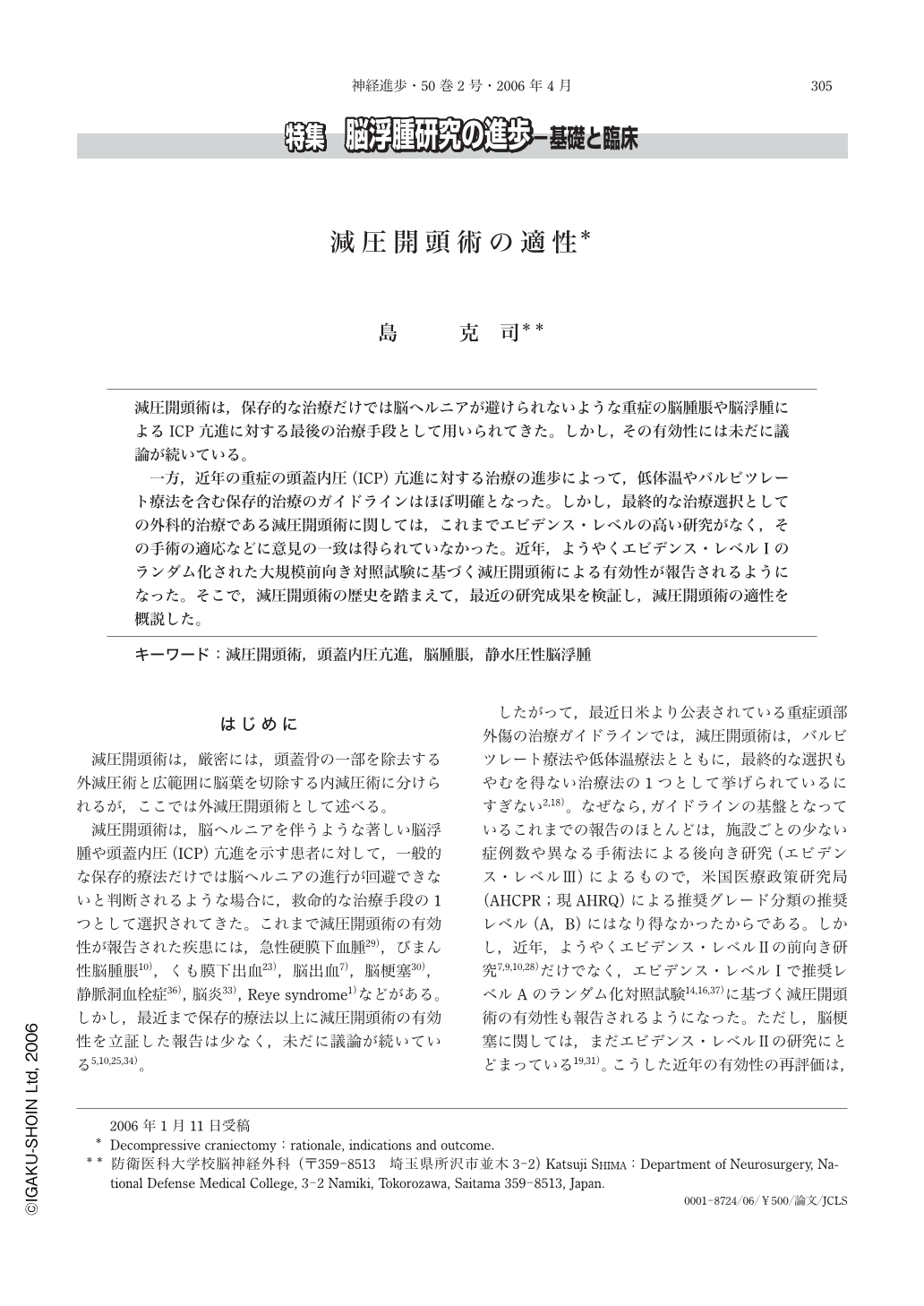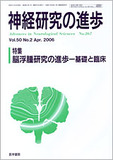Japanese
English
- 有料閲覧
- Abstract 文献概要
- 1ページ目 Look Inside
- 参考文献 Reference
減圧開頭術は,保存的な治療だけでは脳ヘルニアが避けられないような重症の脳腫脹や脳浮腫によるICP亢進に対する最後の治療手段として用いられてきた。しかし,その有効性には未だに議論が続いている。
一方,近年の重症の頭蓋内圧(ICP)亢進に対する治療の進歩によって,低体温やバルビツレート療法を含む保存的治療のガイドラインはほぼ明確となった。しかし,最終的な治療選択としての外科的治療である減圧開頭術に関しては,これまでエビデンス・レベルの高い研究がなく,その手術の適応などに意見の一致は得られていなかった。近年,ようやくエビデンス・レベルⅠのランダム化された大規模前向き対照試験に基づく減圧開頭術による有効性が報告されるようになった。そこで,減圧開頭術の歴史を踏まえて,最近の研究成果を検証し,減圧開頭術の適性を概説した。
Decompressive craniectomy have been used as a final option in the management of refractory intracranial hypertension caused by severe head injury, cerebral infarction and various other causes including hypertensive intracerebral hemorrhage and subarachnoid hemorrhage. However, the beneficial effects of decompressive craniectomy remains controversial. There are large number of studies evaluating the effects of decompressive craniectomy on the outcome of those patients. Although decompression by large craniectomy with duraplasty would relieve the intracranial pressure from swollen brain tissue and prevent brain herniation, several early reports demonstrate a wide range of the outcome of patients after the decompression, with no clear consensus regarding the indications for the decompressive surgery. There are several limitation to compare the individual data published. Most studies are based on uncontrolled retrospective data, small number of patients and different surgical procedures and indications.
Experimental studies on the effects of decompressive craniectomy in animals have not yielded clear results. Previous studies from our laboratory have shown that external decompression may have adverse effects on severe brain edema and swelling. After decompression, tissue pressure decreases, resulting in an increase in perfusion pressure. Then, the transluminal hydrostatic gradient of large magnitude will accelerate extravasation of edema fluid in the decompressive area. This hydrostatic edema enhances morphological and metabolic damage of the vascular wall and causes reopening of blood-brain barrier, which is similar to that in vasogenic edema.
Decompressive craniectomy is considered to be one of several“second-tier therapies”for refractory intracranial hypertension by the American Association of Neurological Surgeons guidelines for the management of severe head injury, which is viewed as classⅢ(expert opinion)evidence. The need for multicenter, prospective, randomized controlled studies in head injury and cerebral infarction has recently been emphasized by several reports. In 2005, two prospected and randomized multicenter trails were reported from Chinese and European groups. The author reviewed these reports and analyzed to identify patients most likely to benefit from decompressive craniectomy.

Copyright © 2006, Igaku-Shoin Ltd. All rights reserved.


